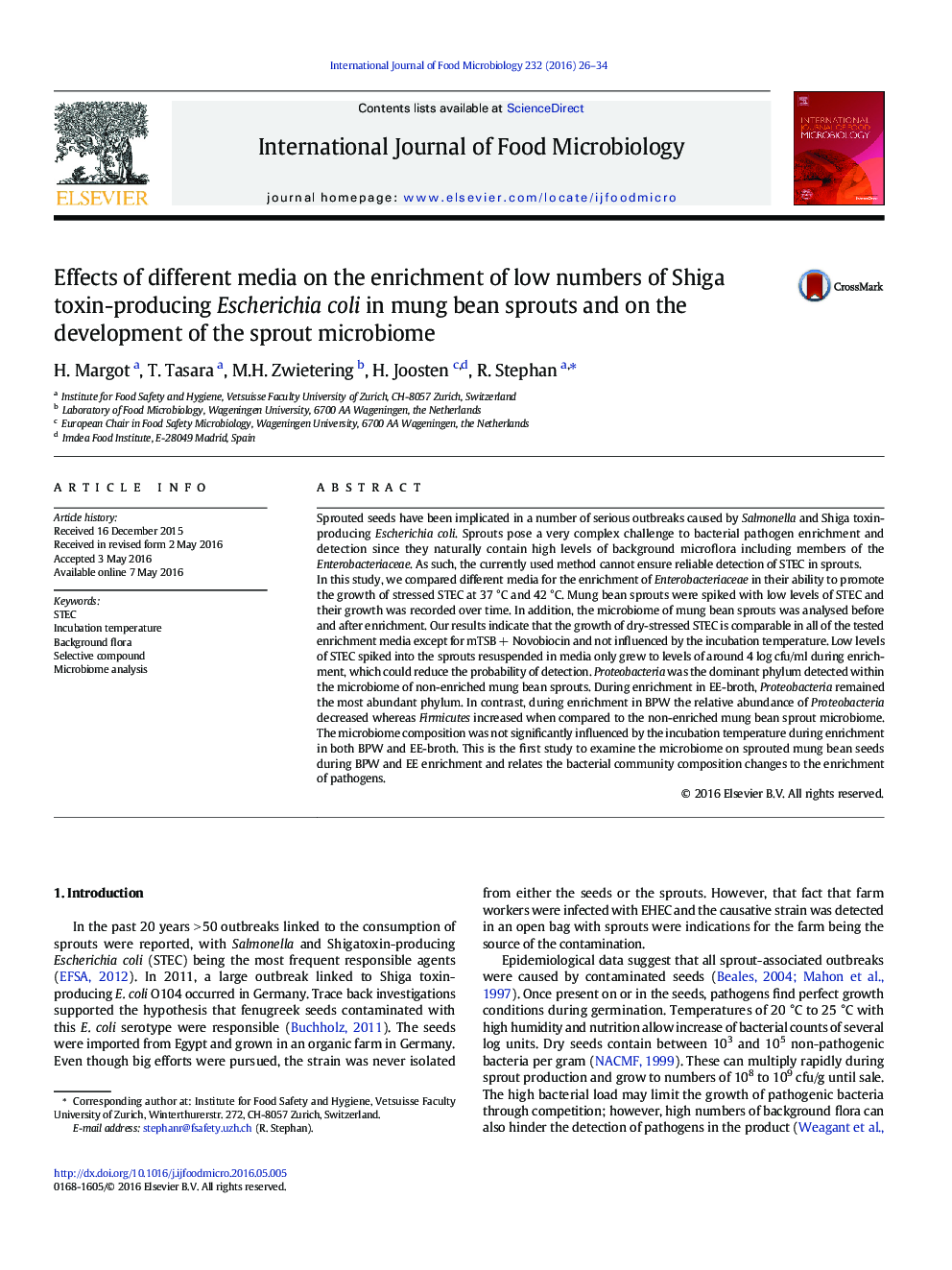| Article ID | Journal | Published Year | Pages | File Type |
|---|---|---|---|---|
| 6289756 | International Journal of Food Microbiology | 2016 | 9 Pages |
Abstract
In this study, we compared different media for the enrichment of Enterobacteriaceae in their ability to promote the growth of stressed STEC at 37 °C and 42 °C. Mung bean sprouts were spiked with low levels of STEC and their growth was recorded over time. In addition, the microbiome of mung bean sprouts was analysed before and after enrichment. Our results indicate that the growth of dry-stressed STEC is comparable in all of the tested enrichment media except for mTSB + Novobiocin and not influenced by the incubation temperature. Low levels of STEC spiked into the sprouts resuspended in media only grew to levels of around 4 log cfu/ml during enrichment, which could reduce the probability of detection. Proteobacteria was the dominant phylum detected within the microbiome of non-enriched mung bean sprouts. During enrichment in EE-broth, Proteobacteria remained the most abundant phylum. In contrast, during enrichment in BPW the relative abundance of Proteobacteria decreased whereas Firmicutes increased when compared to the non-enriched mung bean sprout microbiome. The microbiome composition was not significantly influenced by the incubation temperature during enrichment in both BPW and EE-broth. This is the first study to examine the microbiome on sprouted mung bean seeds during BPW and EE enrichment and relates the bacterial community composition changes to the enrichment of pathogens.
Related Topics
Life Sciences
Agricultural and Biological Sciences
Food Science
Authors
H. Margot, T. Tasara, M.H. Zwietering, H. Joosten, R. Stephan,
